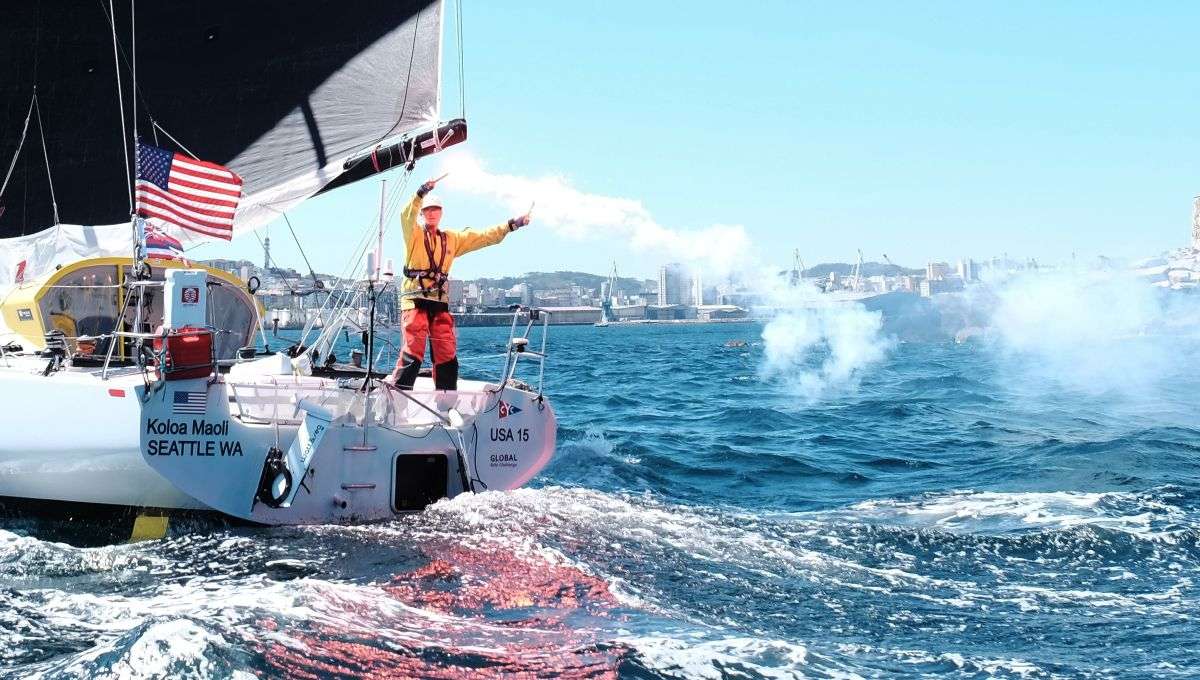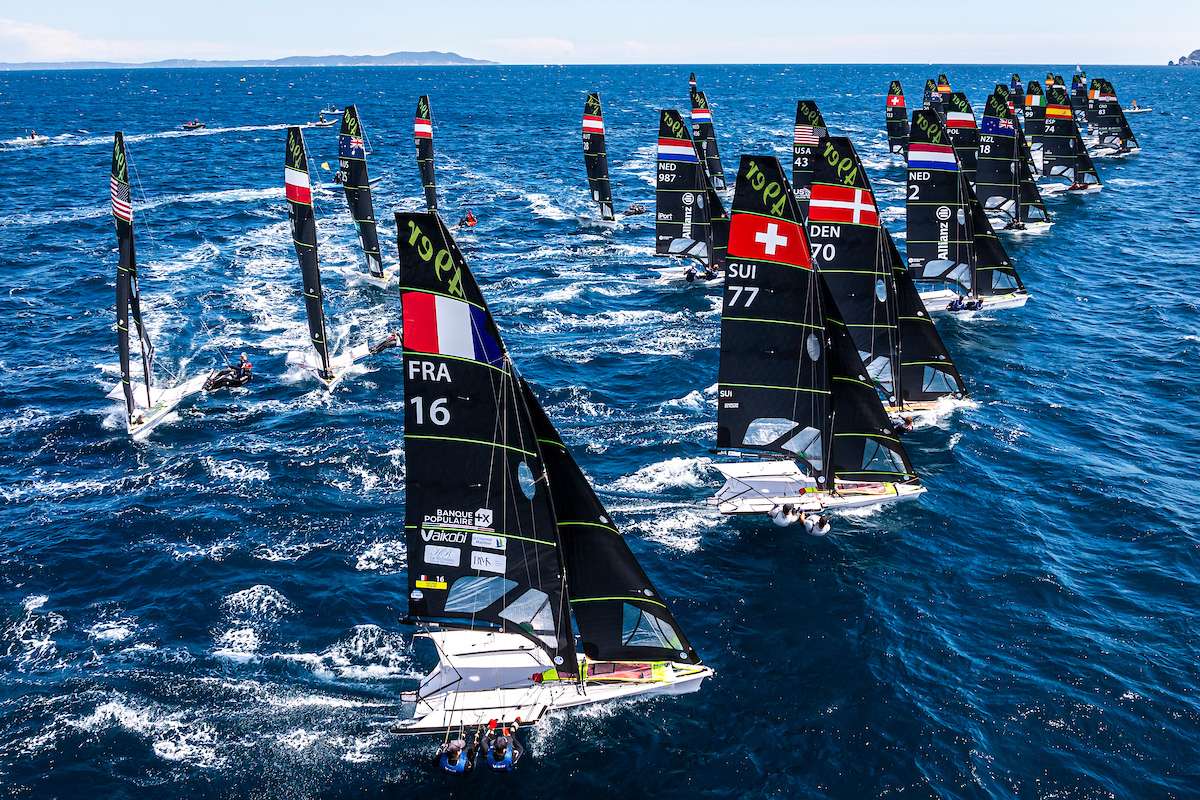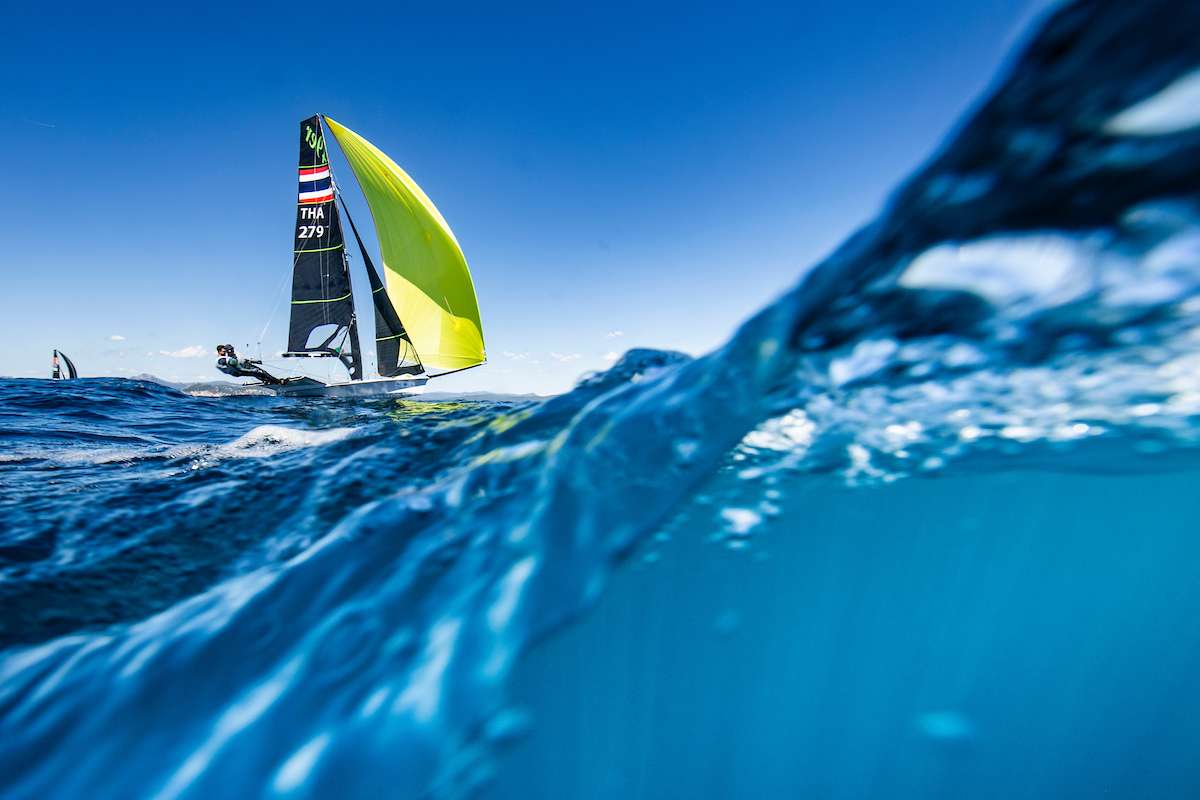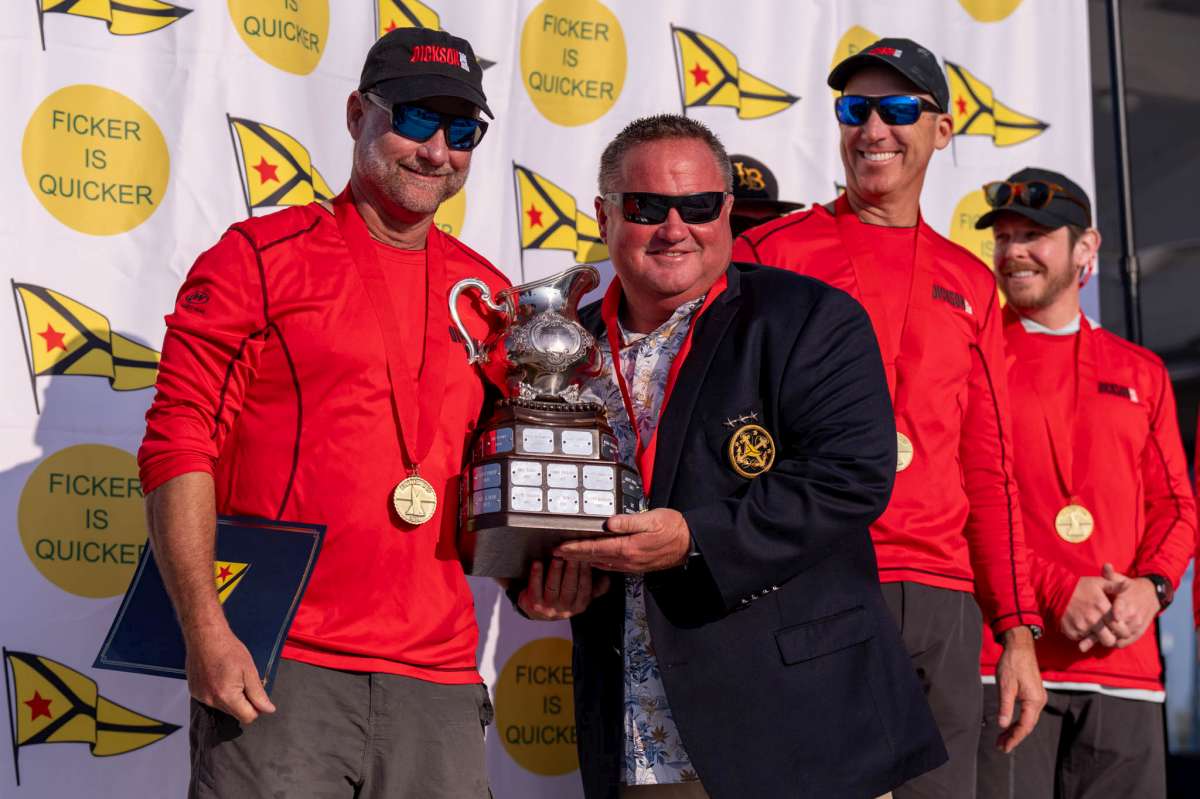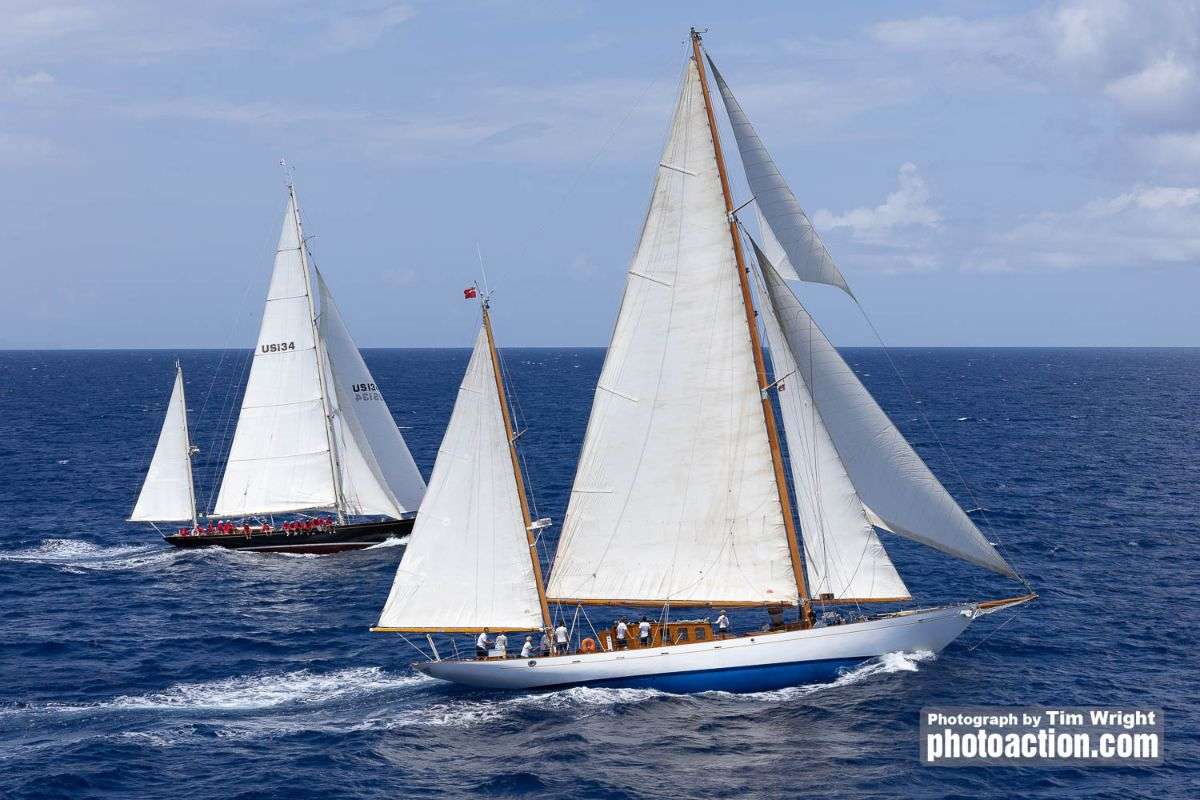The move by Bavaria into the multihull market could be seen to be a smart one. The multihull charter market is growing world wide and the opportunity to buy straight into multihulls through a known and respected designer and builder in Nautitech was too good to pass on.
Mark Blake and Michael Galbraith are the owners of Ensign Brokers latest sale, the Bavaria Open 40. Mark is an ex-Seawind owner and experienced catamaran racer. Michael is retired, has always sailed but not multihulls. They were looking for the perfect vehicle for them to take cruising, either together or separately with families.
Given their history they wanted a catamaran that also performed, “Nautitech pedigree said they could deliver and indeed this is able to tack upwind and hold a similar-sized monohull,” said Blake, “the advantage being without spilling the champagne!”
Mark had liked the yacht when he first inspected it and when Michael inspected it at the boat show, he rang Blake and said it “ticked all the boxes.”
For both of them the Bavaria ownership adds confidence in the efficiency and economy of the build.
So far the partnership is working well, “we sort out our deadlines ahead of time and so far so good, it works perfectly. We are still friends.”
Certainly the yacht is in prime condition.
As with all catamaran designs nowadays the saloon and aft deck are one flat open undercover area. The Open 40 keeps the cabin area small with a saloon table seating for six that incorporates the navigation area on the port side and the galley to starboard along the front of the cabin. This makes the aft cockpit spacious with long lounge seating and a large dining table.
The steering stations are also different from other cat designs. Bavaria have forgone the upper bridge deck to save weight and height in keeping with its design brief to have a fast passage maker. The reduction in height also reduces pitching. This removal also means there is no intruding inclusion of stairs in the aft deck nor is the ceiling height lowered in the saloon.
Not having to keep the saloon low also leads to the bridge deck having a high clearance above the water to reduce the dreaded multihull wave slap.
The twin steering stations are well aft and outboard helping to keep the aft deck spacious. The topside gunnel line runs past these stations so the steerer feels well ensconced and not so open to the elements. It also provides a nice arm rest while seated at the wheel.
Given this design you are low in the hull compared to other designs but I did not feel it reduced overall vision of the four corners of the yacht.
The starboard station is the primary one with the engine controls as well as the main halyard. Both stations can be covered with a removable mini bimini.
The brief is to design a catamaran with all its requisite advantages over a monohull: space, no heel, speed off the wind; but also add better performance to match a monohulls advantage: speed upwind and manoeuvrability.
It is easy to make a catamaran hull sail faster, just make the hulls sleek and thin; but then you sacrifice living space. Lombard has taken a leaf out of the latest in monohull design and added quite severe chines to the hulls. Below the waterline is an efficient hull shape while the hull interior volume allows for proper double bunks both fore and aft. Each bunk is two metres long and widens out from 1.6m to 2m. A roomy head with separate shower recess sits between the two cabins in each hull.
This hull width is carried well forward so that both forward hull lockers are roomy enough to include a single berth if desired.
Those chines also provide further bouyancy and a wave break when out in a seaway.
The other restricting factor for a catamaran is weight, hence the removal of the upper bridge steering platform. Despite this restriction the twin 22 kilowatt Yanmars, with sail drives, each feed off individual 215 litre fuel tanks. There are two 80 amp hour engine batteries and four 107ah auxiliaries. The 215l is replicated in the water tank.
The engine rooms are aft of the steering stations making little noise encroachment on the lounging area. We cruised around 2200rpm at 6.5 knots and pushed it over 8kt with both throttles open.
Given the open saloon is designed to serve as the main living area, it is well protected by its hard bimini top. This serves as a useful walking platform if working on the mainsail. Given the boxiness of the cabin top and aft deck it is simple to protect with clears to provide warmth and extra protection in the colder climes.
The cabin saloon area is designed more as a workspace with a fully equipped galley and the nav station. But large front and side windows ensures clear viewing and plenty of light.
While Bavaria has benefitted from the purchase of Nautitech by gaining the multihull design team of Lombard and Nautitech founder Bruno Voisard, Nautitech has benefitted with the build and fitout experience Bavaria provides. Cabinetwork is light and strong to keep weight down. While there is no over-the-top luxury here, you also know there is longevity and strength.
How does all this keeping weight and height down work on performance? There is an impressive amateur video on Youtube which shows an Open 40 doing 20 knots in a 35 knot breeze. Very impressive indeed, especially when you note the magazines still sitting on the table, not sliding around. According to the owner’s manual they would have had two reefs in the main with the Solent jib reefed 60 per cent.
Our day test was nowhere near as exciting. Mike and Mark assure me it goes like the clappers out in the open ocean, while remaining easy and gentle to steer.
We could only manage two knots boat speed but still managed to tack easily within a boat length.
On the foredeck, lounging space is available with the clever use of infill cushions on the Open 40s trampoline. Bow seats add that extra thrill. While the fore lockers are expansive, there are larger lockers just forward of the mast under the cushions. These are sized to hold sails, fenders and even the installation of a generator.
This is a smart inclusion in the multihull market. The marriage between a respected builder and a noted designer has produced a yacht that will suit those looking to take off without the need for larger yachts.








